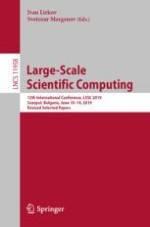This book constitutes revised papers from the 12th International Conference on Large-Scale Scientific Computing, LSSC 2019, held in Sozopol, Bulgaria, in June 2019. The 70 papers presented in this volume were carefully reviewed and selected from 81 submissions. The book also contains two invited talks. The papers were organized in topical sections named as follows: control and optimization of dynamical systems; meshfree and particle methods; fractional diffusion problems: numerical methods, algorithms and applications; pore scale flow and transport simulation; tensors based algorithms and structures in optimization and applications; HPC and big data: algorithms and applications; large-scale models: numerical methods, parallel computations and applications; monte carlo algorithms: innovative applications in conjunctions with other methods; application of metaheuristics to large-scale problems; large scale machine learning: multiscale algorithms and performance guarantees; and contributed papers.
